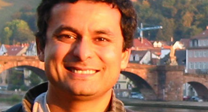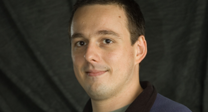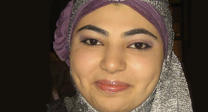Image Analysis
SCI's imaging work addresses fundamental questions in 2D and 3D image processing, including filtering, segmentation, surface reconstruction, and shape analysis. In low-level image processing, this effort has produce new nonparametric methods for modeling image statistics, which have resulted in better algorithms for denoising and reconstruction. Work with particle systems has led to new methods for visualizing and analyzing 3D surfaces. Our work in image processing also includes applications of advanced computing to 3D images, which has resulted in new parallel algorithms and real-time implementations on graphics processing units (GPUs). Application areas include medical image analysis, biological image processing, defense, environmental monitoring, and oil and gas.
Ross Whitaker
Segmentation
Chris Johnson
Diffusion Tensor AnalysisFunded Research Projects:
Publications in Image Analysis:
  POCS-Enhanced Parallel MRI Correction of MR Image Artifacts A.A. Samsonov, E.G. Khölmovski, C.R. Johnson. In Proc. Intl. Soc. Mag. Reson., Note: Abstract, pp. 690. 2005. |
  MRI Tissue Classification with Neighborhood Statistics: A Nonparametric, Entropy-Minimizing Approach T. Tasdizen, S.P. Awate, R.T. Whitaker, N. Foster. In Proceedings of The 8th International Conference on Medical Image Computing and Computer Assisted Intervention (MICCAI), pp. 517--525. 2005. PubMed ID: 16685999 |
  Enhancement of Cell Boundaries in Transmission Micropscopy Images T. Tasdizen, R.T. Whitaker, R. Marc, B. Jones. In IEEE International Conference on Image Processing, Vol. 2, pp. 129--132. 2005. |
  Diffusion Tensor MRI Visualization S. Zhang, D.H. Laidlaw, G. Kindlmann. In The Visualization Handbook, Edited by C.D. Hansen and C.R. Johnson, Elsevier, pp. 327--340. 2005. ISBN: 0-12-387582-X |
  Automatic Tissue Classification for the Human Head from Multispectral MRI SCI Institute Technical Report, T. Tasdizen, D.M. Weinstein, J.N. Lee. No. UUSCI-2004-001, University of Utah, March, 2004. |
 Higher-order nonlinear priors for surface reconstruction T. Tasdizen, R.T. Whitaker. In IEEE Trans. Pattern Anal. & Mach. Intel., Vol. 26, No. 7, pp. 878--891. July, 2004. |
  Case Study: An Evaluation of User-Assisted Hierarchical Watershed Segmentation J. Cates, R.T. Whitaker, G.M. Jones. No. UUCS-04-006, University of Utah School of Computing, 2004. |
  Biomedical Computing and Visualization Software Environments C.R. Johnson, R.S. MacLeod, S.G. Parker, D.M. Weinstein. In Comm. ACM, Vol. 47, No. 11, pp. 64--71. 2004. |







